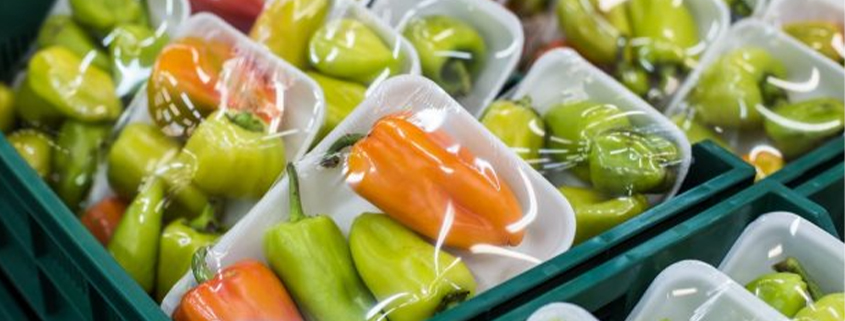The Role of Food-Grade Nitrogen Generators in the Battle Against Food Waste
Global food waste is a major issue on our planet, contributing to hunger worldwide and the emission of greenhouse gases. It’s harmful to both the planet and people.
Globally, it’s estimated that as much as 30% of food produced goes to waste, translating to billions of pounds of food (and billions of dollars) lost each year. Food waste is a social justice problem as well as an ecological problem.
While there isn’t one solution to fix these issues, nitrogen generators can help reduce food waste problems in a variety of ways. Food-grade nitrogen in food packaging can help extend food shelf life by preventing the oxidation process which helps food get to people who need it, thus addressing global hunger in the process.
In this article, we’ll discuss the role that food-grade nitrogen plays in food packaging and transportation, how nitrogen in food packaging can help prevent food waste, what to know about nitrogen generators for food packaging companies, and how On Site Gas works with various companies throughout the food and beverage packaging industry to provide nitrogen gas systems.
What Are Nitrogen Generators?
A nitrogen generator is a device that isolates nitrogen from the air and produces a steady stream of nitrogen. Nitrogen generators are useful in a variety of industries including the food and beverage industry, pharmaceuticals, welding, electronics, and oil and gas industries.
Nitrogen generators come in different types including pressure swing adsorption (PSA) nitrogen generators and membrane nitrogen generators. PSA nitrogen generators use two chambers and a carbon molecular sieve to separate nitrogen from other molecules and then eject the nitrogen.
Membrane nitrogen generators use a membrane to separate nitrogen from other molecules, producing a steady stream of nitrogen. Membrane nitrogen generators produce nitrogen at a slightly lower purity than PSA generators. The type of nitrogen generator that your business needs depends on the nitrogen purity level required.
The Role of Nitrogen in Food Preservation
Oxygen contributes to the breakdown and degradation of food over time. Oxidation is what causes food to produce off-flavors, odors, and colors, and creates conditions that encourage microbial growth. As those microbes spread over the surface of the food, it begins to deteriorate faster.
When oxygen is absent from food packaging, food can last a very long time. Nitrogen generators are used to fill food packaging with nitrogen, which pushes out oxygen and helps food preservation. Nitrogen food preservation is an effective way to prolong the shelf life of many foods and beverages since the nitrogen content preserves textures and flavors, protects nutrients, and prolongs food shelf-life.
Fish, chips, coffee, nuts, vegetables, dried fruits, and a variety of ready-to-eat products all benefit from food-grade nitrogen gas. Food-grade nitrogen is used in packaging and in a process called fluffing, which contributes to the fluffy texture of mayonnaise.
Chemical preservatives have been used heavily in the food industry for many years, but health concerns over these chemicals have made many consumers averse to purchasing and eating foods that contain such chemicals. It’s important to note that nitrogen is non-toxic. It makes up a large percentage of the air we breathe every day, and the chemicals in food packaging pose no risk or health concern. In some cases, nitrogen can help make foods safer by replacing preservatives.
The use of nitrogen in food packaging is also useful for food transportation as nitrogen helps keep food safe to eat after packaging. In some packages, nitrogen also creates a pillow that helps prevent food from being crushed or damaged during transit (bags of chips are a good example of this). Using nitrogen in food packaging helps prevent food waste by increasing food’s shelf life, enabling food to be shipped all over the world, and preventing food from sustaining damage.
Advantages of Using Nitrogen Generators
While some businesses choose to obtain their nitrogen through cylinders and other delivery methods, the purchase of a nitrogen generator for food packaging is the most efficient and cost-effective way to obtain a sufficient supply of nitrogen. There are numerous advantages to using nitrogen generators:
- Environmental benefits: Nitrogen generators are always available and on-site, versus nitrogen cylinders which require delivery from vehicles that use fossil fuels.
- Less cost over time: Although nitrogen generators have a larger up-front cost, they incur far fewer ongoing costs. Over the years, the cost is recovered.
- No supply chain complications: Businesses that rely on vendors to ship nitrogen to their location can be vulnerable to supply chain problems. Nitrogen generators do not have these problems, and are always on-site, ready to use.
Need a Food-Grade Nitrogen Generator? Contact On Site Gas
There are many benefits of using a food-grade nitrogen generator. Here’s why many people in the food industry have turned to food-grade nitrogen generators for their food and beverage packaging needs:
- Decreased reliance on chemical preservatives
- Reduced food waste
- Improved product quality
Ultimately, switching from the use of chemical preservatives to nitrogen food packaging is a good decision for your brand. On Site Gas Systems sells N2 generators for food packaging, and we make nitrogen generation systems for businesses of all types. To learn more about nitrogen generators for food packaging purposes, contact On Site Gas Systems.









Leave a Reply
Want to join the discussion?Feel free to contribute!